Finney Barn - Detroit Underground Railroad Station
Introduction
Text-to-speech Audio
Images
The Finney Barn (image from Clarke Historical Library)
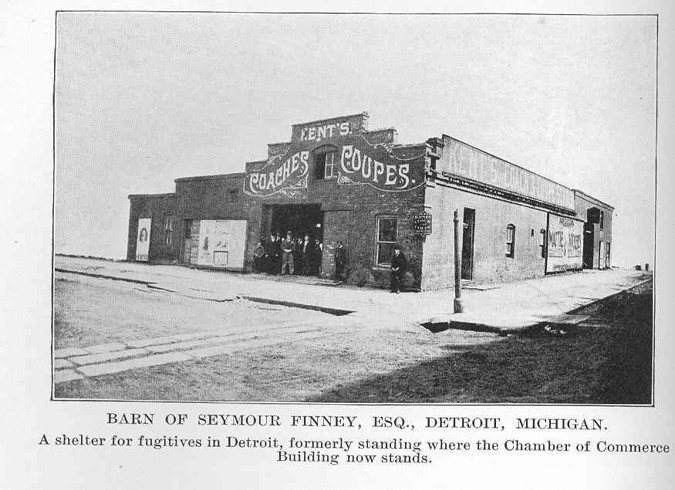
The Finney Hotel (image from Genealogy Trails)
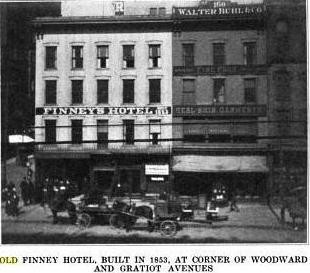
Historic marker for the barn (image from Historical Marker Database)
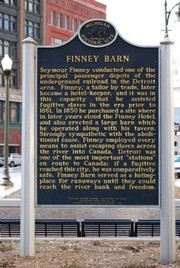
Detroit Underground Railway Station historic marker (image from Historical Marker Database)
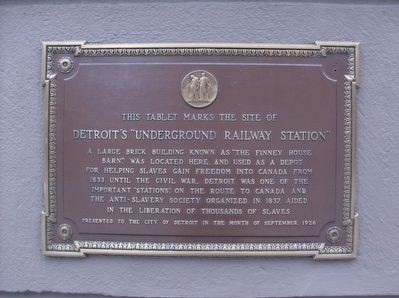
Both markers are within Capitol Park in downtown Detroit (image from Detroit News)
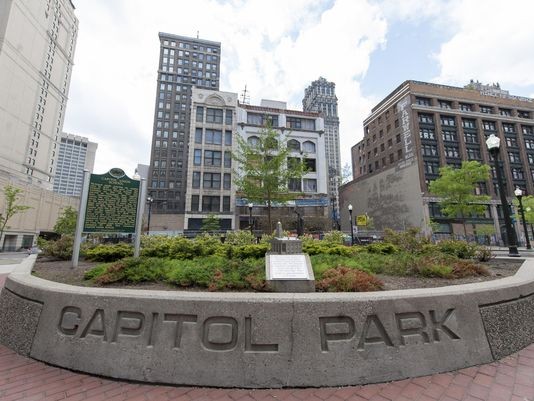
Finney Barn in the foreground (image from the Burton Historical Collection, Detroit Public Library)
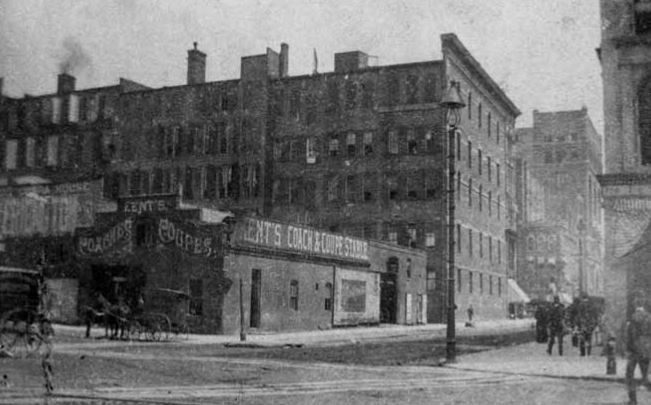
Backstory and Context
Text-to-speech Audio
Unfortunately, the barn was razed in 1892 to make way for the Detroit Chamber of Commerce building, which now bears the 1926 plaque designating the site as Detroit's Underground Railway Station (inscription below) [2].
Historic Marker Inscriptions:
Finney Barn
Seymour Finney conducted one of the principal passenger depots of the underground railroad in the Detroit area. Finney, a tailor by trade, later became a hotel-keeper, and it was in this capacity that he assisted fugitive slaves in the era prior to 1861. In 1850 he purchased a site where in later years stood the Finney Hotel, and also erected a large barn which he operated along with his tavern. Strongly sympathetic to the abolitionist cause, Finney employed every means to assist escaping slaves across the river into Canada. Detroit was one of the most important "stations" en route to Canada; if a fugitive reached this city, he was comparatively safe. Finney Barn served as a hiding-place for runaways until they could reach the river bank and freedom. / Erected 1980 by Michigan History Division-Department of State. (Marker Number S0069.) [4]
Detroit's Underground Railway Station
This tablet marks the site of Detroit's "Underground
Railway Station" / A large brick building known as "The Finney House
Barn," was located here and used as a depot for helping slaves gain
freedom into Canada from 1833 until the Civil War. Detroit was one of the
important "stations," on the route to Canada and the Anti-Slavery
Society organized in 1837, aided in the liberation of thousands of slaves. / Erected 1926 [3].
